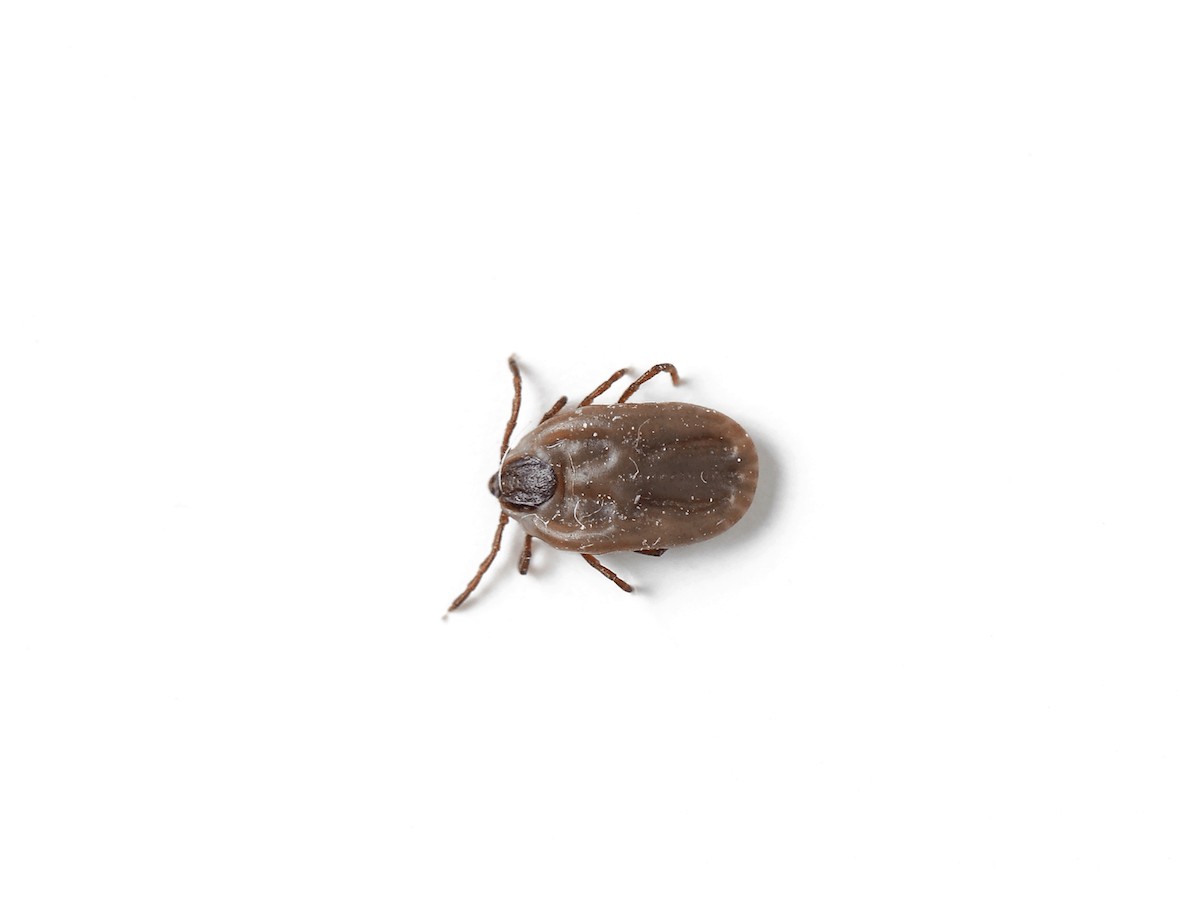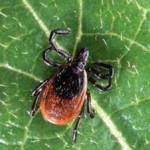What are Ehrlichia?
Ehrlichia are a type of bacteria that infect and live within the white blood cells of their hosts. Different types of Ehrlichia live in different types of white blood cells. The bacteria enjoys humans as well as domestic and wild. Ehrlichia are spread from one host to another via tick bites.
The two Ehrlichia we are concerned with are Ehrlichia Canis and Ehrlichia Ewingii
1. Ehrlichia Canis Infection (also Called Canine Monocytic Ehrlichiosis)

Ehrlichia Symptoms in the Dog: Ehrlichia canis infection is a worldwide disease. In the U.S., it is spread by the bite of the brown dog tick. This tick can transmit other tick-borne infections (Babesiosis and Rocky Mountain Spotted Fever) so infection with multiple organisms are not uncommon. Sometimes, it can be challenging to know which symptoms goes with which tick-borne infection.
There are three phases of illness with Ehrlichiosis: acute, subclinical, and chronic.
Acute Phase
This phase occurs 1 to 3 weeks after the host is bitten by the tick. The Ehrlichia organism is replicating in this time period. During the acute infection, the platelet count will drop and an immune-mediated platelet destruction will occur.
The dog will be listless, off food, and may have enlarged lymph nodes and/or spleen. There may be fever and even neurologic symptoms as well, but although the dog may seem pretty sick, this phase of infection is rarely life-threatening. Most dogs clear the organism if they are treated in this stage but those that do not receive adequate treatment will go on to the next phase after 1 to 4 weeks.
Subclinical Phase
In this phase, the dog appears normal. The organism has sequestered in the spleen and is essentially hiding out there. Dogs can stay in this phase for months or even years. The only hints that Ehrlichia might be hiding are a somewhat reduced platelet count and/or elevated blood globulin level (the protein portion that includes miscellaneous antibodies.) Long-term stimulation of the immune system will elevate globulins, sometimes dramatically. Not all dogs ever progress to the chronic stage but when they do, the prognosis is worse.
Chronic Phase
In this phase the dog gets sick again. Up to 60 percent of dogs infected chronically with Ehrlichia canis will have abnormal bleeding due to reduced platelets numbers. Deep inflammation in the eyes called uveitis may occur as a result of the long-term immune stimulation.
Neurologic effects may also be seen. Glomerulonephritis, resulting in serious urinary protein loss, can also result. Increased globulin levels are almost always seen in this stage, albumin is often low. Most dogs in the U.S. do not show the full pancytopenia (literally reduction in all blood cell lines) but severe cell deficiencies are associated with high mortality rates.
2. Ehrlichia Ewingii Infection (also called Canine Granulocytic Ehrlichiosis)

Ehrlichia ewingii is spread by the bite of the lone star tick (Amblyomma americanum) as pictured on the right.Ehrlichia ewingii is a different species of the Ehrlichia genus. It infects a different white blood cell and is not generally as serious as Ehrlichia canis. Dogs are usually only mildly ill or even inapparently infected but classically symptoms revolve around swollen stiff joints/arthritis and fever.
How the Diagnosis is Made
There are two main tests for Ehrlichia: PCR testing for Ehrlichia DNA or blood testing for Ehrlichia antibodies. Antibody testing has been the main diagnostic for many years but recent availability of PCR testing has changed the approach.
Of course, if one is lucky the organisms will be seen on a blood smear, which clinches the diagnosis.
Antibody Testing
Traditionally, when Ehrlichiosis is suspected, a blood test for antibodies against Ehrlichia organisms can be ordered, or performed in minutes using an in-house test kit. There are some limitations to antibody testing. A positive test indicates that the dog has been exposed to Ehrlichia but does not necessarily imply an active current infection.
A negative titer does not fully rule out Ehrlichia, either, as a very sick patient may be too ill to produce antibodies and an early case may not yet have started to produce them. Antibody titers can be measured in the laboratory, which makes it much easier to track progression; the in-house test kits are simply either positive or negative and a numeric value is not provided.
Alternatively, a test kit for Ehrlichia can be run while you wait if your veterinarian’s clinic is so equipped. These tests are accurate but only produce a positive or negative result, so it is not possible to see how an antibody level is changing.
It takes 6-9 months after infection for antibody levels to begin to drop. Antibodies against Ehrlichia canis and Ehrlichia ewingii will cross-react so it is not easy to determine which organism a dog has been exposed to.
PCR Testing
Recently PCR testing for the presence of Ehrlichia DNA has become available. Commonly a laboratory will offer a tick panel, which uses PCR testing to screen for a group of classic tick-borne diseases. PCR testing remains positive for several weeks after infection has cleared as it does not distinguish between live and dead organisms. It takes time to clear dead organisms from the body.
These two forms of testing are complementary, which means an antibody test can be used to screen dogs to identify those that have been infected. Treatment can be prescribed and after the treatment has completed and a couple of weeks have passed, the PCR test can check for any residual Ehrlichia DNA to indicate the infection has cleared.
Treatment
Doxycycline is probably the most effective against Ehrlichia (and any other intracellular blood parasite for that matter). Expect at least a month of treatment to be needed. Response is initially rapid (improvement is notable in the first few days).
Dogs in the acute or subclinical stage at the time of treatment can expect to be cured. A common protocol involves 28 days on doxycycline and a PCR test 2 weeks post-treatment. If the test is negative then another final PCR test is done in 2 months. If the post-treatment test is positive, another 28 days of doxycycline is used and a 2-week post-treatment PCR is repeated. If this second post-treatment PCR test is still positive, another medication (such as chloramphenicol or imidocarb) should be used.
If immune-mediated secondary reactions to the Ehrlichia are a problem (such as immune-mediated arthritis, or immune-mediated platelet loss) corticosteroids such as prednisone can be used to palliate the situation while the antibiotics are starting to work.
Dogs in the chronic stage are more difficult to treat as they are sicker and more debilitated. Once destruction of a part of the kidney called the glomerulos occurs, it is very difficult to treat these dogs and the best hope is for chronic management. Additionally, blood transfusion may be needed and mortality rate is much higher.
Surviving dogs can become re-infected as Ehrlichia immunity is not life-long. So if you think your dog has been exposed to ticks of has had a test come back positive for this bacteria, talk with your veterinarian about the best course of action.


